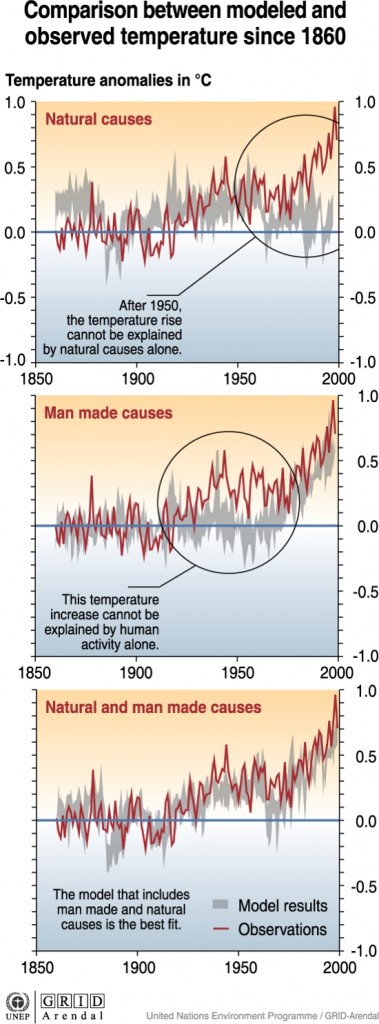17 February 2009
Constraining The Feedbacks in Earth's Climate
Posted by Dan Satterfield
When you boil it down to extreme simplicity, there is only one thing that controls how hot or cold the earth is. The amount of radiation we receive from the sun. Oh, but if it were that simple!
If you run the numbers using the Stefan Boltzmann’s ( E= Sigma * T exp 4 ) equation, you will come up with an Earth temp. of WAY below freezing! In reality Venus is at that “just right” distance from the sun. We on Earth, are too far from the sun.
Really!
Our atmosphere of water vapor, with a little carbon dioxide thrown in, saves us from an eternal deep freeze. (Until the Sun becomes a red giant in a Billion years then it’s toast.
(Literally.)
Yes, our lovely, but very thin atmosphere keeps our average temp right around 15C.
Climate scientists spend a LOT of time trying to figure out just how things like soot, and cloud cover, and greenhouse gases feedback into our climate system. Some things are known very accurately. Like the effects of CO2 and Methane. Others are known fairly well. A few are known very poorly.
To forecast the amount of temperature rise caused by increased greenhouse gases, things like the reflectivity of the Earth has to be taken into account. Melting ice that once reflected 80% of the energy back to space is replaced by dark Arctic ocean that absorbs almost all of that energy.
So how do we know that the climate models showing a much warmer planet by 2100 are correct.
Well we don’t.
We CAN check them however, by running them backwards. Start in 1880 and run the model up to 2000. We already know the answer! Lets see if the model does.
It does.

Still, one of the more interesting graphics I have seen recently, shows just where the uncertainties are. The graph below shows how much the different human elements affecting our temperature. It also shows how accurately we know their magnitudes. Spend a minute to look at it. (Based on the IPCC 4th assessment report)
This journal is not written for the “dumb as I want to be” crowd whose eyes glaze over when they see any graph more complicated than the USA Today TV guide. So I know you will really look at it.

Ok, so there you have it. What is understood well and what is not understood well. Aerosols and their effect on clouds are still a problem. CO2 is not. Lets say that the cooling affect is much more than currently thought. At the extreme of the currents constraints. Total net human activities, still give us warming. Only the magnitude varies.
Our current estimate is that we are adding an EXTRA amount of heat equal to a 1.6 watt light bulb over every square meter of earth’s surface. Day in, and day out. It will eventually start to really change things.
More than likely the numbers will be pretty close to the current estimates. A few surprises perhaps. In 10 years, the error bars on that graph will be a lot smaller. Thats what the top climate scientists do. They try to “better constrain” the estimates.
It is fascinating just how they come up with ingenious ways to do it. It is what makes Science so fun. Maybe some young person reading this will in a few years be responsible for doing just that.
I’m not smart enough to reduce the uncertainties. I have just enough smarts to explain it to you. I am happy with that. I love doing it!
The reason the public has a poor understanding of this issue is partially the fault of the news media, and partially the fault of scientists. Since I work in both fields, I guess I ‘m due double criticism. Well, perhaps I have done my part to clear things up some!
Later,
Dan


 Dan Satterfield has worked as an on air meteorologist for 32 years in Oklahoma, Florida and Alabama. Forecasting weather is Dan's job, but all of Earth Science is his passion. This journal is where Dan writes about things he has too little time for on air. Dan blogs about peer-reviewed Earth science for Junior High level audiences and up.
Dan Satterfield has worked as an on air meteorologist for 32 years in Oklahoma, Florida and Alabama. Forecasting weather is Dan's job, but all of Earth Science is his passion. This journal is where Dan writes about things he has too little time for on air. Dan blogs about peer-reviewed Earth science for Junior High level audiences and up.